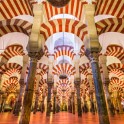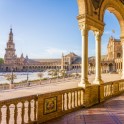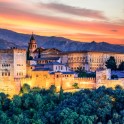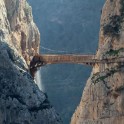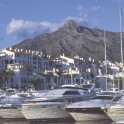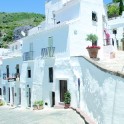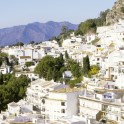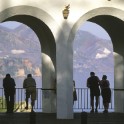It's difficult to put a number on all Ronda's natural, architectural and artistic gems, let alone limit ourselves to highlighting just a few monuments. However, an emblem for the town does exist in the collective imagination: the Gorge and the eighteenth-century Puente Nuevo bridge that crosses it. The bridge, almost 100 metres high with its semicircular arches, is the focal point of the most iconic photograph of the town. Less famous but equally beautiful is the Puente Viejo bridge, built in 1616. In the immediate vicinity, we can find the Arco de Felipe V and the Sillón del Moro ("the Moor's Armchair"), a stone bench that was the setting to tales of kings and princesses in the days of Al-Andalus.
Info + Pic:© 2018 Turismo y Planificación Costa del Sol S.L.U



